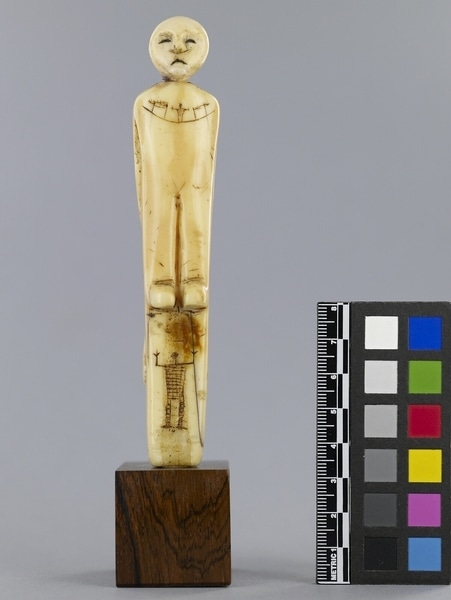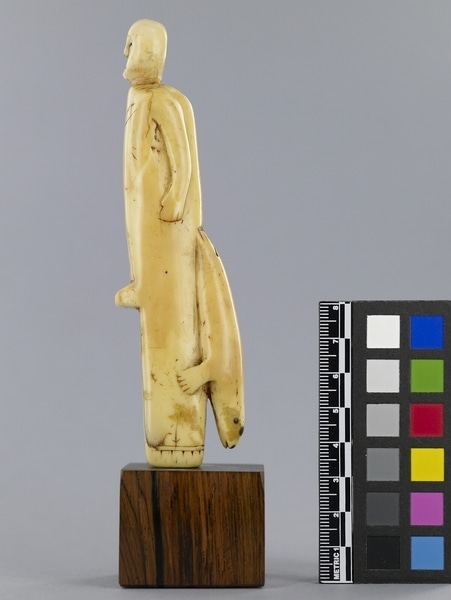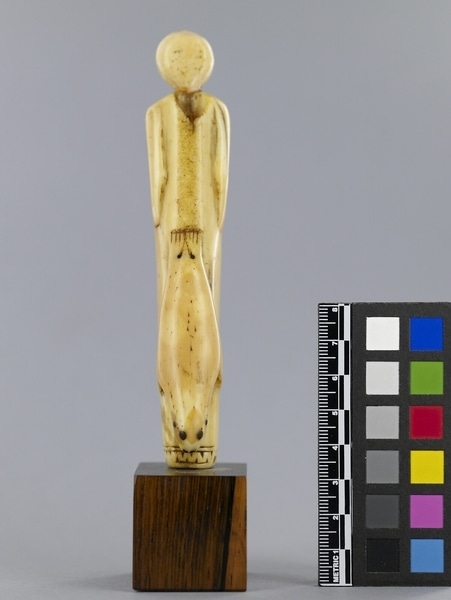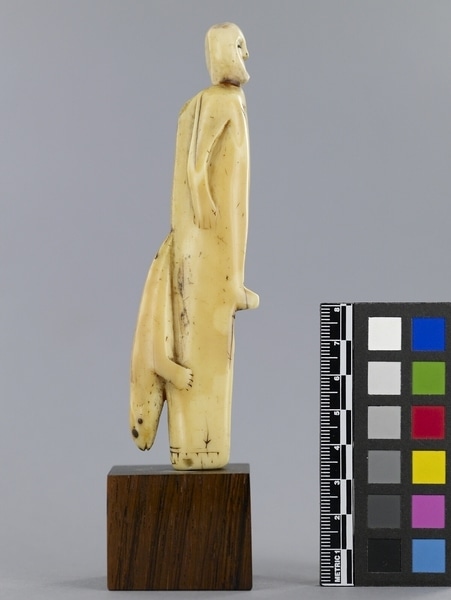Needle Case Item Number: Na1086 from the MOA: University of British Columbia




Description
Long rectangular tube with rounded corners, drilled hole through centre, longitudinally, and circular human figure with head appendage at top. Head is flattened in side view; raised forehead and nose; heart shaped facial plane with incised, dark brown crescent-shaped eyes and mouth. Relief carving on tube includes arms which are pulled back along figure's side; feet are sticking out 2/3 rds of the way down the tube. There is an indentation indicating legs. Seal on back with raised head at bottom, inlaid round nostrils, eyes and smaller circles behind and to the sides of eyes. Front limbs straddle tube; seal tapers towards back with back flippers indicated by vertical lines and curved lines converging to end from 2 dots. Incised decoration includes; semi-circle line on figure's chest, along this line is a stick figure with arms outstretched between 2 rectangles, one of which maybe an animal; large frontal figure at bottom, below feet is crosshatched with arms raised. Decorative band on at bottom edge on sides and back are 3 horizontal lines; between first and second are triangle shapes extending in from both lines. Arrows on each side. Design worn on side. Few longitudinal cracks, some carving marks and embedded dirt. Head has been broken and repaired with adhesive.
History Of Use
Used for holding needles and sewing equipment. Needle cases are either stoppered or have a leather strap running through the tube's central hole. Needles are kept in the strap and exposed by pulling down on one end. Sometimes ornaments are attached to the end of the strap to prevent it from pulling completely through. Thimble guards may also be attached. Sewing is primarily a woman's task. Skillful construction and maintenance of skin clothing was an important, critical activity. Men made the needle cases of bone and tusk. Such cases are most common along the north coast; Ackerman placed this case in the Western Thule Phase.
Item History
- Made in Alaska, USA between 1200 and 1500
- Owned by Marianne Koerner and Walter C. Koerner before January 8, 1981
- Received from Marianne Koerner (Donor) and Walter C. Koerner (Donor) on January 8, 1981
What
Who
- Culture
- Inupiaq
- Previous Owner
- Marianne Koerner and Walter C. Koerner
- Received from
- Marianne Koerner (Donor) and Walter C. Koerner (Donor)
Where
- Holding Institution
- MOA: University of British Columbia
- Made in
- Alaska, USA
When
- Creation Date
- between 1200 and 1500
- Ownership Date
- before January 8, 1981
- Acquisition Date
- on January 8, 1981
Other
- Condition
- good
- Current Location
- Case 51
- Accession Number
- 0697/0007